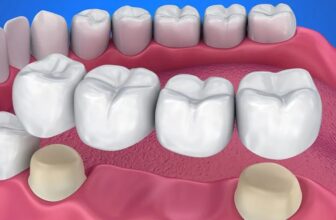
Tay-Sachs Disease: An Overview of Causes and Treatments
1. Introduction
One of the diseases that have not yet been curable or treatable is Tay-Sachs disease, which causes physical abnormalities, blindness, impaired muscle tone (severe contractions), dysphagia, mental regression, seizures, hearing loss, spasticity, pulmonary, and bone infections, leading to death by the second or third years of life. Derived from degenerative brain disease. Tay-Sachs disease exhibits autosomal recessive inheritance due to mutation in the HEXA gene located in chromosome 15. This mutation leads to the absence or reduction of the part of the hexosaminidase (HEX) protein necessary for the breakdown of gangliosides, predominant in neural cells of the brain. Gangliosides are present in high concentrations in the plasma of globules in the granule cells but are also found throughout the nervous system in various glycoproteins. The presence of GM2-gangliosides in the external and lysosomal cell membranes of neurological cells in patients with Tay-Sachs disease, especially at the neuronal dendrite level, is the cause of the observed macronodular structure.
Although medical research over the past few decades has seen great advances, with new therapies discovered for a variety of once-fatal genetic diseases, there are still some illnesses for which there are no treatments. These diseases, collectively known as incurable, cause severe mental and physical disabilities in their sufferers, presenting them and their families with colossal challenges. Even though the cure for a disease is not necessarily always discovered by medication, and research is essential to unveiling its apparent features, an early diagnosis is essential to prevent its advance by granting patients a more normal life by controlling the symptoms. Such a recent example is that of Pompe disease, which was recently spoken in the pandemic movie called Extraordinaires. After the suffering of no longer understanding the impacts of the disease could be avoided, creating life expectancy.
2. Causes of Tay-Sachs Disease
Tay-Sachs disease (TSD) was first described in 1881 as a neurodegenerative disorder that causes all kinds of grief for children born with the condition. It is a genetic disease with autosomal recessive inheritance. We all have two copies of the HEXA gene; one that we inherit from mom and one from dad. I tell my students that they inherited one copy of this gene from their mothers and one from their fathers because most students are what is said to have their gene expressed. If the gene was not being made enough by making at least one good copy, then either mother or father’s copy could make enough of the needed enzyme that breaks down large lipids in the brain.
In 1881, Warren Tay and Bernard Sachs described the key features of the disorder. Dr. Warren Tay, a British ophthalmologist, observed cherry-red spots, a known characteristic of TSD, in a year-old child with mental impairments that progressed to blindness and paralysis beginning at four months of age. Dr. Bernard Sachs, an American neurologist, later discovered lipid deposits in the brains of a young girl and a two-year-old boy with similar symptoms. He also observed that the child of one of these patients had the cherry-red spot and common skeletal anomalies that go along with Tay-Sachs disease. It was later confirmed on histopathology samples as previously mentioned. From these findings, the disease was called “Tay-Sachs” as these two scientists are credited for the first description of these crucial findings.
3. Symptoms and Diagnosis
3.3.5.5. Multifactorial Inheritance. A person is multifactorial with a genetic disease when the following characteristics are present: Corpus appropriately examined for specific genetic conditions and chromosomes. Difficult to replace recurrence risk accurately when conditions are due to multiple genetic mechanisms combined with environmental influences. There was an increased likelihood of recurrence and with more severe disease in close relatives. Tay-Sachs Disease is a rare inherited disorder that results from two-out-of-three or even two-out-of-four actually conferred by multiple defective generations in the HEXA gene located on chromosome 15 and leads to fatal accumulation of harmful proteins and lipids in the brain. Diagnosing TSD before a baby is born is often a high priority for those with an increased risk of giving birth to a child with the disease. Tests often performed include chorionic villus sampling for TSD, blood tests that look for mutations in the family for TSD, special cultures of epidural fluid, a multidisciplinary blood test that measures the amount of the enzyme alpha-fetal protein.
3.2.3. Diagnosis of Tay-Sachs Disease. Prenatal Genetic Testing. In the past, as soon as the Tay-Sachs mutation was detected in a family, prenatal diagnosis was offered. Couples whose baby was found to be affected with Tay-Sachs aborted the affected fetuses and proceeded with selective termination again and again, as if driven by top-down mandates rather than through choice. This should have been a time of sheer happiness as their unborn child was developing in the womb and what awaits should have been echoed joy. Even those who find comfort in the practice might not have delved into its ethics and implications or even imagined the incident may be as one of endless iterations that reflect the enormity of the polemic that challenges life. Had they been encouraged to reflect or even given a voice and an autonomous choice, most may not have supported a perpetuated ritual. Eradication of the TSD gene mutation became the focus, its life-depleting option the standard of care.
3.1. Tay-Sachs Disease. Tay-Sachs disease was first described in 1881 and is known to occur most frequently in families of Eastern European Jewish origin (designated as Ashkenazim) and is one of a group of genetic diseases that are collectively known as lysosomal storage diseases. These disorders represent a common metabolic tool that results from failure of lysosomal enzymes to break down substrates that accumulate within specific cell types. This leads to abnormal cellular function and eventual cell death and presents as tissue and organ damage. TSD is classified as a neurodegenerative lysosomal storage disease and is one of the most devastating. A person who has inherited the TSD mutation lacks an enzyme called hexosaminidase A, which is essential to the breakdown of lipids in the nerve cells of the brain.
4. Treatment Options
National Tay-Sachs & Allied Diseases Association: The National Tay-Sachs & Allied Diseases Association has funded over $15 million in research projects and works to raise awareness for its members. It also serves as a supportive resource for families dealing with a Tay-Sachs or other lysosomal storage disease diagnosis who may experience misconceptions about the illness. Expansion of Pan-Ethnic Carrier Screening for Tay-Sachs & Canavan Diseases: The journal Jewish Currents published an article by Sharon Shapiro-Lacks in which she describes the journey of her cousin’s family who have two sons who were both diagnosed with and died from Tay-Sachs. Shapiro-Lacks subsequently began the JFAR Testing Program (now part of Einstein), which financially supports Tay-Sachs carrier screening costs for anyone who requests it. The article describes the program’s beneficiaries’ diverse backgrounds and the organization’s work to raise public awareness concerning the significance of Tay-Sachs carrier screening for everyone. Any Jewish individual of Ashkenazi or non-Ashkenazi essential heritage is eligible for CTAD testing.
Treatment: There is no cure for Tay-Sachs disease. Treatment focuses on improving the quality of life of affected children. Treatment for a child suffering from Tay-Sachs may involve a feeding tube to ensure adequate nutrition, physical therapy, occupational therapy, and other intervention efforts. Scientists are currently investigating the potential for gene therapy as a treatment for the disease. Gene therapy involves introducing a healthy version of the affected gene into the body. There are no known treatments for Sandhoff disease yet. Parents often wonder what they can do with this information. Most importantly, when someone is considering having a baby, it is important to get screened. If both members of a couple are carriers for the same disease, each pregnancy will have a 1 in 4 chance of a child having the disease. Couples who are both carriers for the same disease are advised to consult a healthcare provider who is board certified in genetics to discuss their options.
5. Future Research and Outlook
Since 1900, hundreds of people with Tay-Sachs disease and related diseases have been treated with bone marrow and other types of allogeneic transplants. To my knowledge, no autologous transplants have been performed or reported. Typically, bone marrow transplants are performed in circumstances in which the affected patient was a small child or at least under 18 years of age, and often rather young.
5.2 Long-term outcome of recipients of bone marrow allografts for the treatment of infantile and juvenile onset GM2 ganglioside storage disease.
It is remarkable that despite over two decades of exploration of using gene therapy with recombinant viral vectors for the infantile ganglioside storage diseases, there exist no published quantitative datasets available from which to proceed rationally to improve the performance of therapeutic products. Furthermore, the standard by which the efficacies of evolving preclinical therapeutic candidates are continually judged is the gold standard of conventional hematopoietic stem cell transplantation. The ongoing need in both the pre-clinical and clinical arenas of the utility of improved novel cellular and gene therapies, the lack of available recurrent validation data, are important sources of repeated further change in direction in the development and testing of new cell and gene therapies for these diseases.







